For turkey hunters, springtime means hearing that unmistakable gobble through the cold morning mist. It startles us, jolting our brains and flooding our bodies with adrenaline. It’s an exciting feeling, to say the least. But, getting there—to where that gobbler is—takes some prep work.
Turkey hunting really starts before the season does. Scouting is key to finding good places to hunt. Y’all know I love using trail cameras for everything from deer season to shed hunting, and turkey season is no exception. I look for turkey sign throughout the property where I’m hunting, and place them where I think those birds might be. Look for tracks, droppings and telltale dustbowls. Turkeys will turn over the earth, hollowing out shallow basins in the loose dirt, to dust and preen, almost as if they are taking a bath. Hens may do this more than gobblers, but nature still works the same way: Come breeding time, where there are hens, gobblers will be close by.
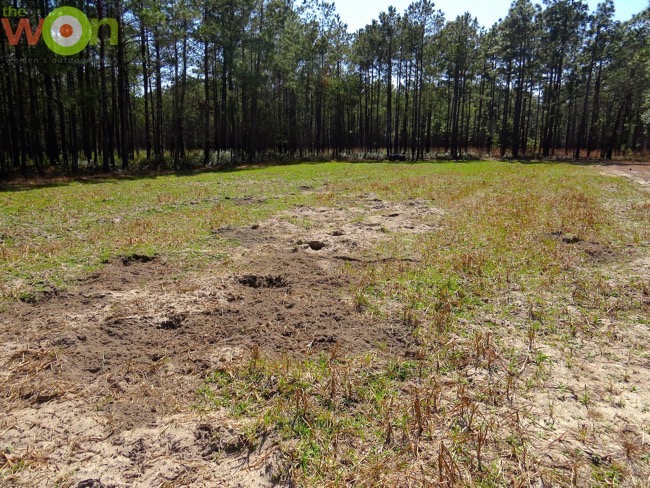
Sometimes it looks like a grenade went off in the middle of a field. That’s when you know you’ve got turkeys.
If I haven’t seen much sign, I put corn out to draw turkeys in, just to see which birds are on the property. Here in South Carolina, this is legal until 14 days before the season opens, and I make sure to give myself plenty of wiggle room so I’m not breaking the law. Between turkeys, deer, doves and other woodland creatures, the corn only lasts a day or two at most. Still, I’ve now got an idea of what toms are around and where I should start my hunts.
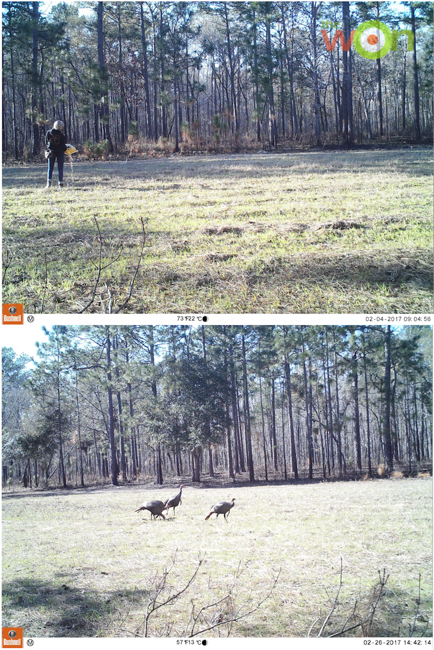
While you’re out scouting and you see turkey sign, make note of places you could set up a blind or create a makeshift one in the brush to stay hidden.
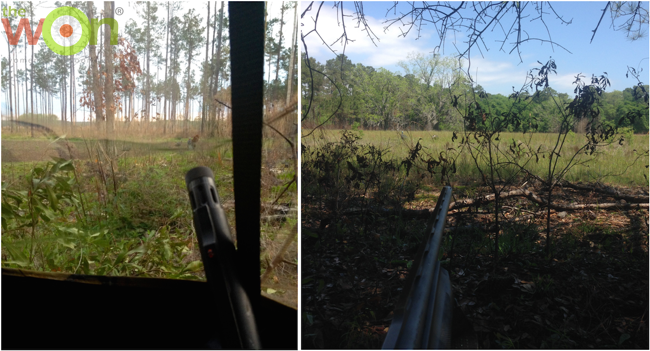
Using a blind and hiding in the natural brush both have their advantages. The choice is yours.
Whether you are hunting with a shotgun or a bow, practice your shots beforehand. I personally use a 12-gauge shotgun. It’s the same one I use during duck season, but fitted with a turkey choke tube and shooting turkey loads. Patterning my gun before the season opens helps me determine what my shot spread does at a given distance, which lets me know my maximum kill-shot range. Knowing that, I just need to call the turkeys inside that range.
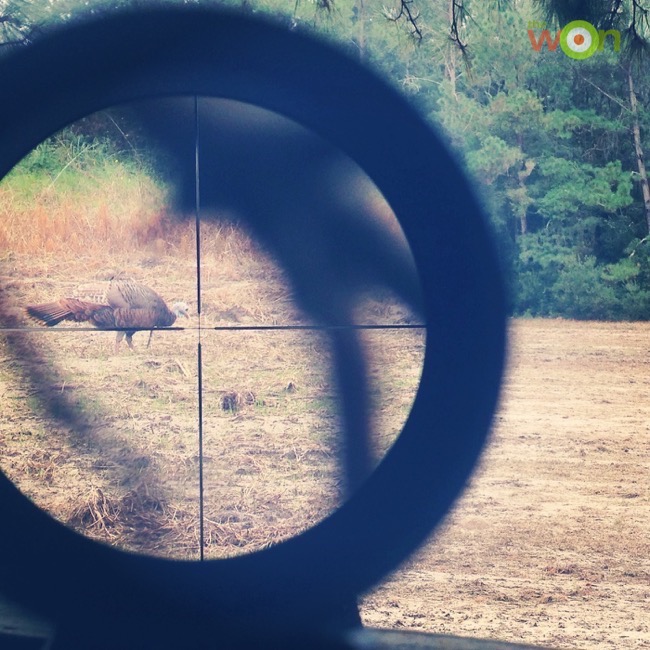
Turkey sightings when you’re in the deer stand are always entertaining.
Turkey calling is a finicky task. I use both a box call and a slate call, and my proficiency at one over the other somehow changes on a day-to-day basis. Sometimes I hit that box call and I can feel every turkey in the state coming toward me. Other times, I feel sure I’ve scared every turkey out of the state instead. Practice is the only way to overcome this. Listen to recordings or watch videos real of birds, not just an app for turkey calling, and try to mimic those. After all, not all turkeys sound alike or make the exact same sounds. There are real hens that sound like someone backing over a turkey call, and some that even the best champion callers couldn’t mimic. Bottom line: Pick the call or two you’re most comfortable using and keep practicing. Having a few different sounds in your back pocket can only increase your odds.
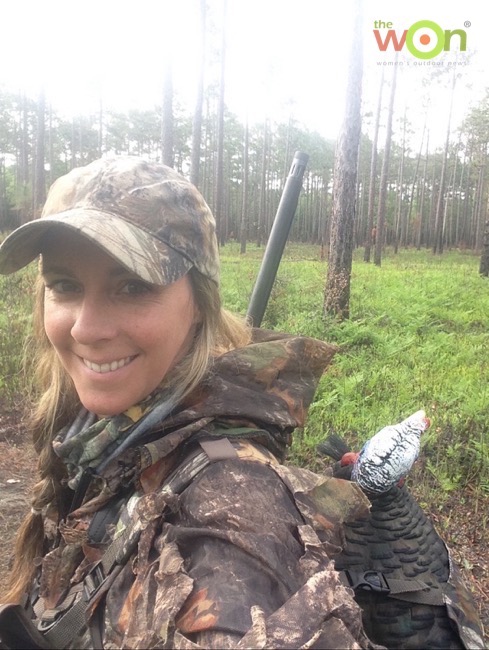
When it comes to turkey hunting, I have a bit of a love-hate relationship with decoys. I’ve had hunts where are a turkey would never have come into the field had I not put decoys out, and hunts where they’ve been detrimental. Last year, I had a hen get so comfortable with my decoys that she actually passed within a few feet of me several times, completely unfazed. My artificial decoys brought in a live one, and a live decoy is hard to beat.
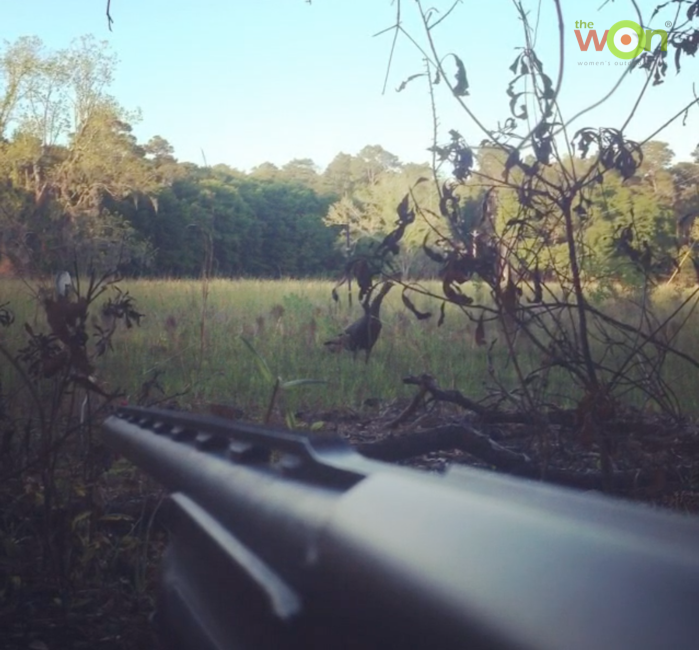
I was able to take videos this hen milling around almost an hour, and she never spooked.
On the other hand, there have been times when I’ve regretted setting up my decoys as soon as I heard a gobble. I once had two monster toms come into a clearing, their sharp eyes focused on the plastic hen I’d set up. Then, about 70 yards out, they stopped dead in their tracks. Whether it was because she didn’t turn to face them or because she just didn’t move at all, something about that hen just did not seem right to them. And so at 70 yards they stayed. For close to 10 minutes I sat frozen, barely breathing or even moving my eyeballs for fear of making the situation worse. Eventually, they decided she was a lost cause and disappeared back into the brush. I am confident that, had I not put out the decoy and relied solely on the call, those boys would’ve come further into the clearing and within range.
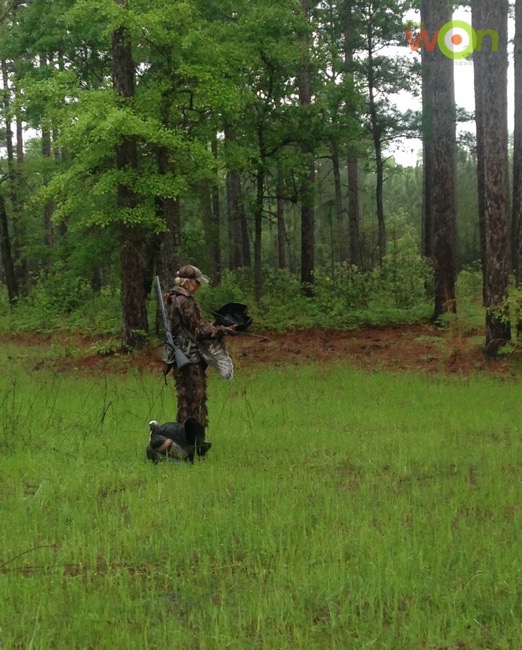
Heading home empty-handed.
As far as prep goes, the last thing on the list is your gear. Invest in a good turkey vest with a decent seat pad, and your rear will thank you when it comes time to sit and wait for a turkey. Head-to-toe camouflage is essential, especially if you’re hunting straight from the ground and not from an artificial blind, where part of you may be hidden from view. Turkeys have excellent eyesight (several times better than that of a human) and a wide field of view, so do as much as you can to blend into your background. Depending on where I’m hunting, I will often wear different but complimentary camouflage patterns to help break up my outline.
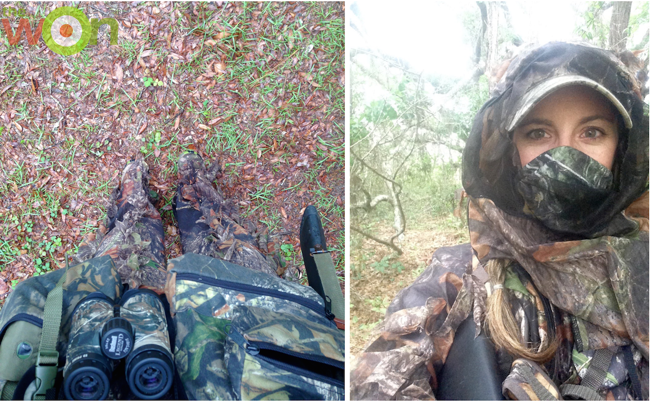
Once the season opens, it’s off to the races. There are generally two methods of turkey hunting: hunting from a blind (a long-haul effort in one place, with or without decoys) and the “run and gun” method. Often, I end up doing a combination of the two. Here’s how to get started on the right foot: Just before daylight breaks and you get to the edge of the woods or field you intend to hunt, pause and listen. If you hear a gobble nearby, go ahead and set up close to where you’re standing. Don’t move in much farther, you could bust him before he even comes down from the roost. If you hear a gobble farther away, move based on its location and try to set up where you think the gobbler will head once he flies down.
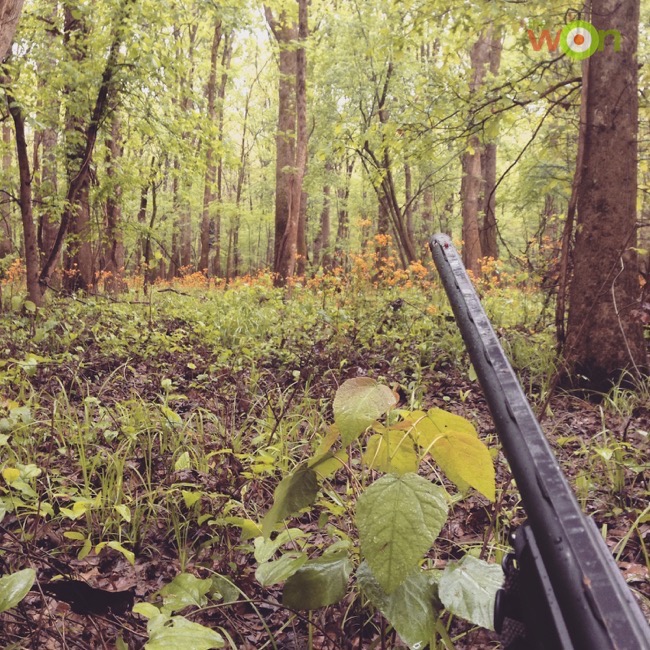
Halfway between the swamp and an acorn flat, I set up to catch a tom en route.
If possible, try to avoid entering the woods too close to where the turkeys may be roosting. A few years ago, I scouted an excellent-looking patch of timber that I felt confident would produce a turkey the next morning. I was hunting with my dad, and we got to the woods early to get set up before the birds would move. We had been settled maybe 5 minutes when I heard a loud “whoosh” from above, about 15 yards behind me. I jerked my head around to see what the commotion was, and 2 turkeys flew straight over our heads and out of sight through the trees. Those birds sat in their roost and watched us set up, probably laughing at our foolishness the whole time. Needless to say, we didn’t kill a turkey that morning.
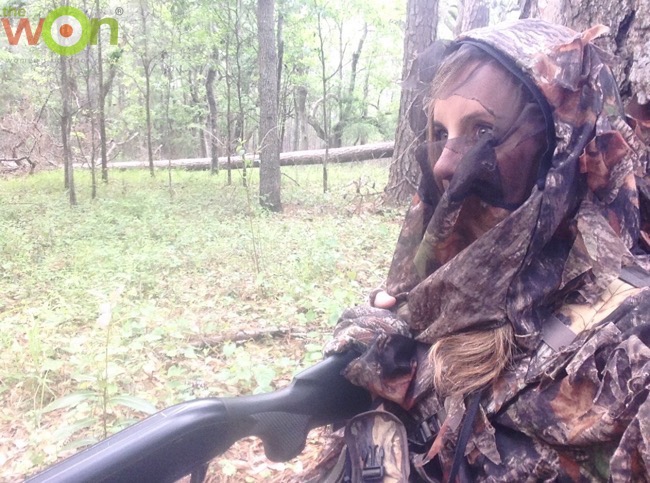
Once you get set up, it’s a good idea to get comfortable and sit with your gun ready. This will put you in a position to easily raise your gun to shoot, with minimal movement that could be detected by the bird. If a big gobbler comes in hot and you’re sitting with your legs stretched out and the gun across your lap, he will likely see you and get spooked before you can raise your gun to your shoulder. Also, I say “get comfortable” because patience is key when hunting turkeys. You may have to sit very still in one position for a long time, so it’s best to be prepared for just that. Fidgeting can alarm even the most distracted gobbler.
When a gobbler does come in, get ready for the show. Watching toms strut and show off is one of the most entertaining sights in the woods. If your gobbler is committed, don’t try to hit the call or move in any way to further entice him. Turkeys have very good hearing and he will pinpoint your location unless you are directly behind the decoy in his line of sight. An overzealous call could mean the difference between bagging a bird and going home empty-handed.
The best time to raise your gun or draw your bow is when you are not in the turkey’s line of sight. If he is in full strut, tail fan out, make your move when he turns around to show the hen his swagger from a different angle. If he is on the move, be quick when he passes behind a tree or bush and his vision is blocked in your direction. Be aware that your only opportunity to do this may be while he is still out of range. Don’t wait for another chance as he gets closer. You may not get one.
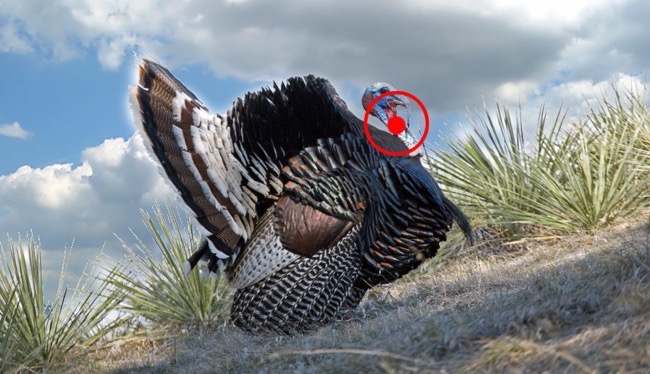
(grandslamnetwork.com photo)
Once the tom is in range and you are ready, aim for the spot where his head and neck meet his body. This will give you the best chance to drop him, taking out both his head and spinal column. Then take the shot and bag your gobbler.
This Retro WON first appeared March 30, 2017.
Hollis Lumpkin writes that she is a "simple girl living in the Lowcountry of South Carolina, but I happen to have a great love for the outdoors, particularly hunting and fishing." She is a duck-hunting freak. Hollis pens an exclusive version of "The Bright Side of the Road," for The WON. View all posts by Hollis Lumpkin